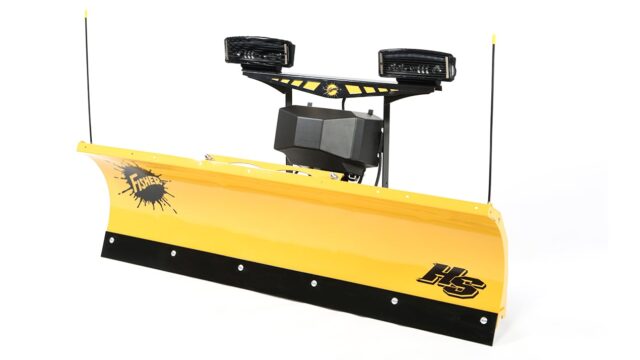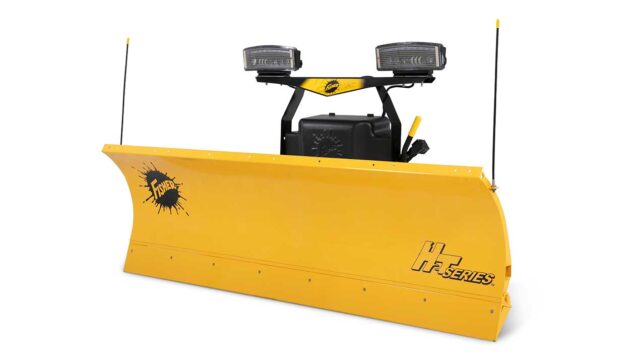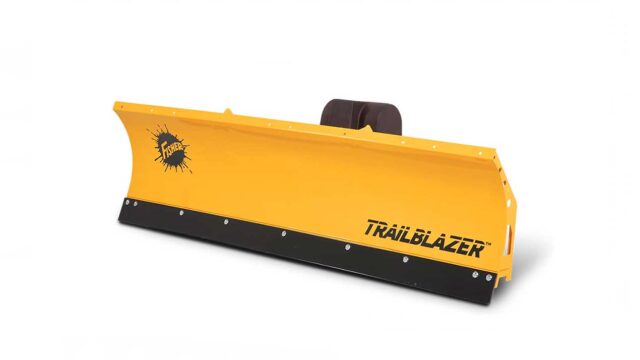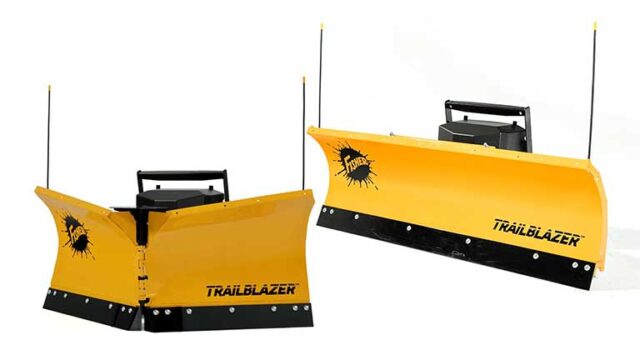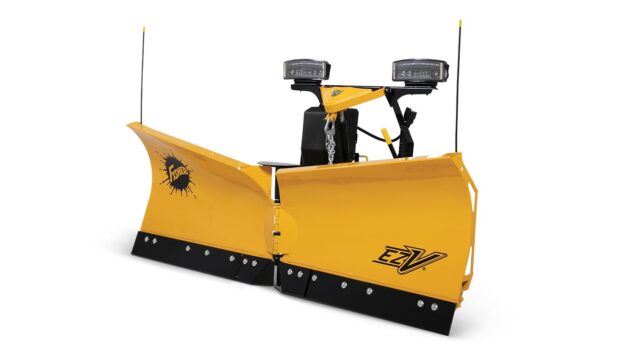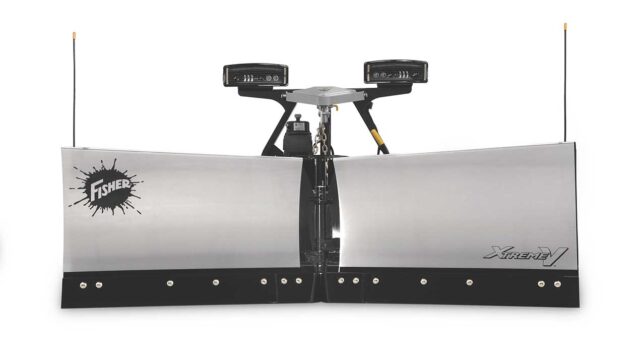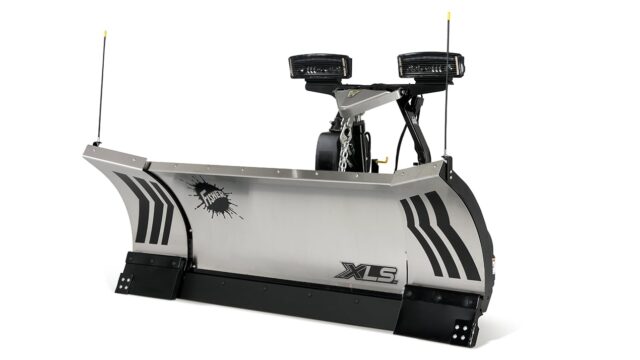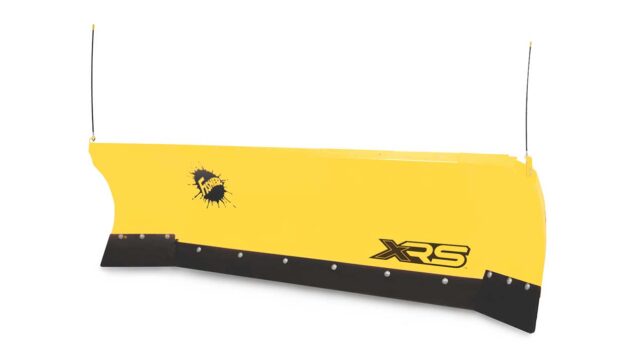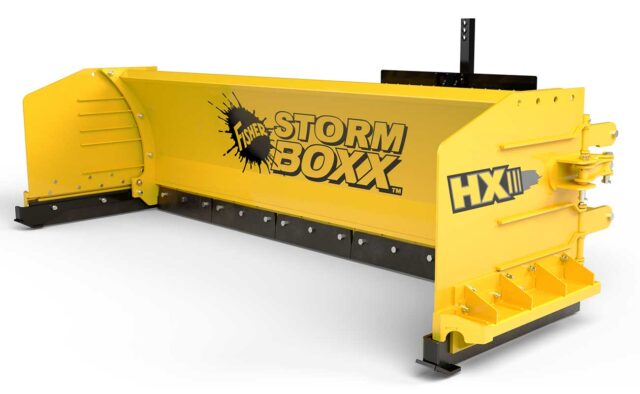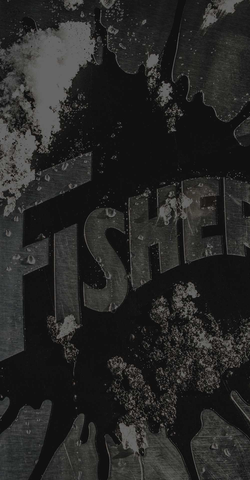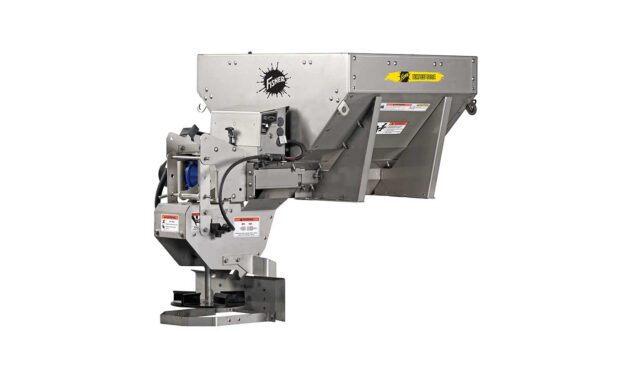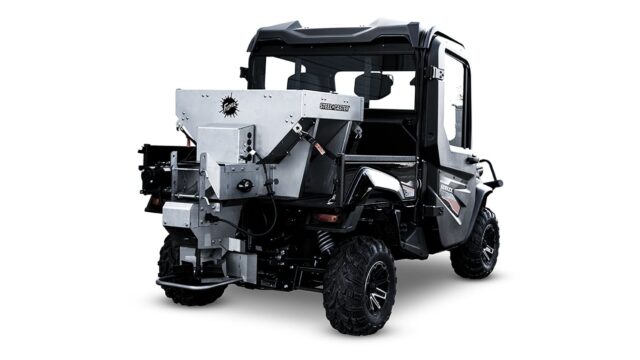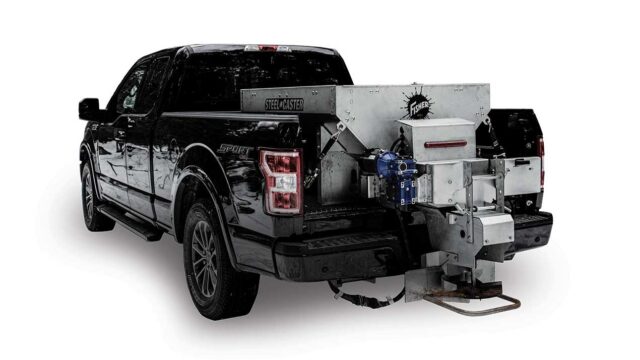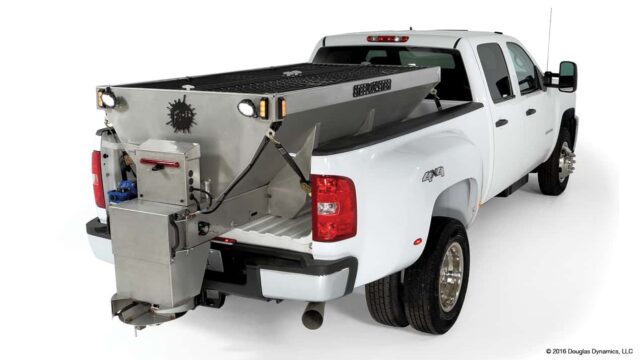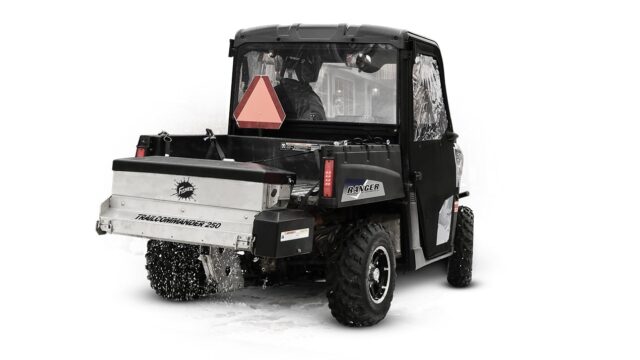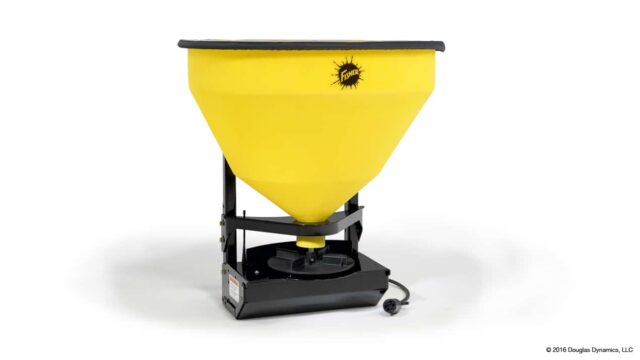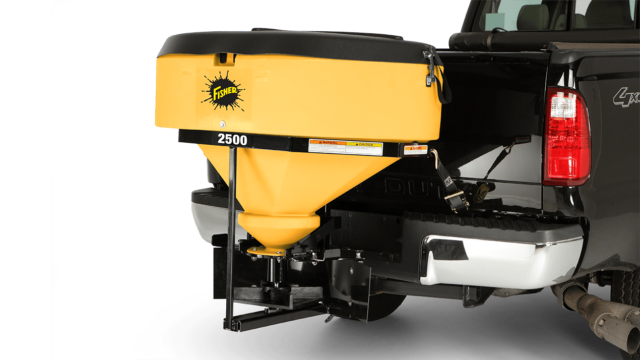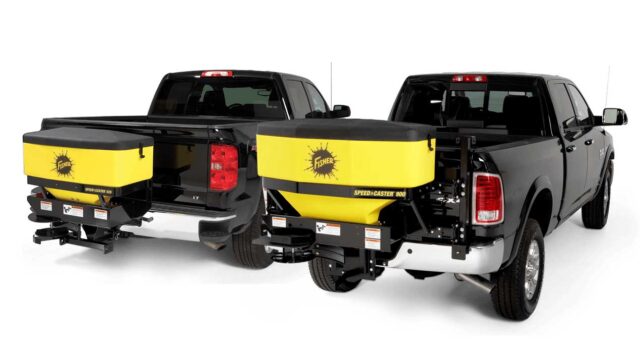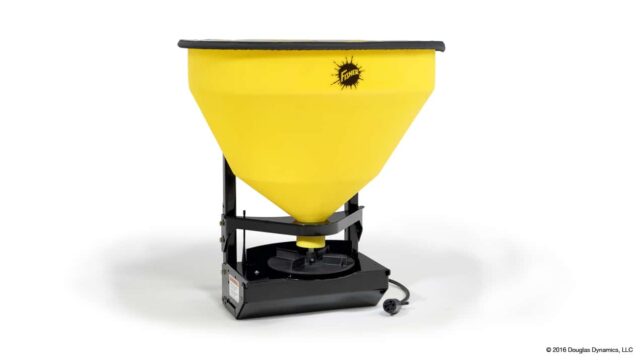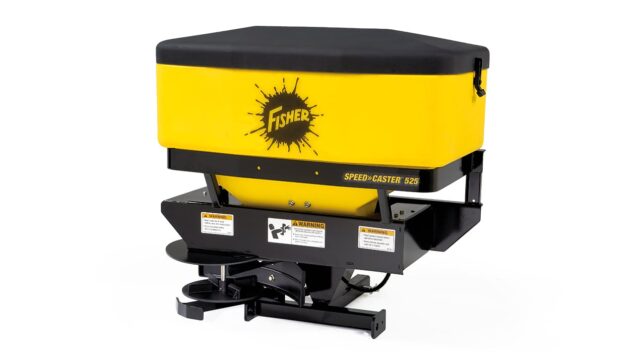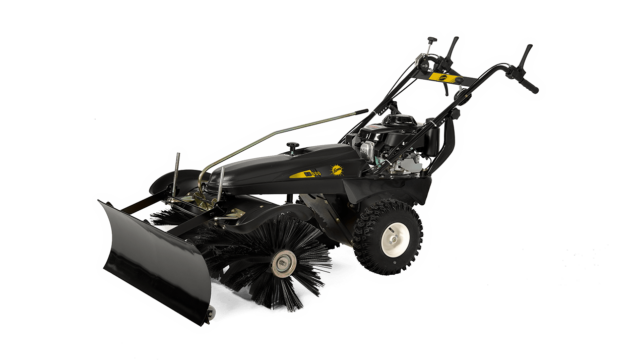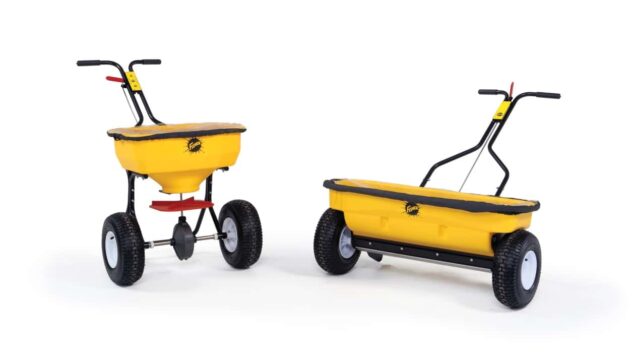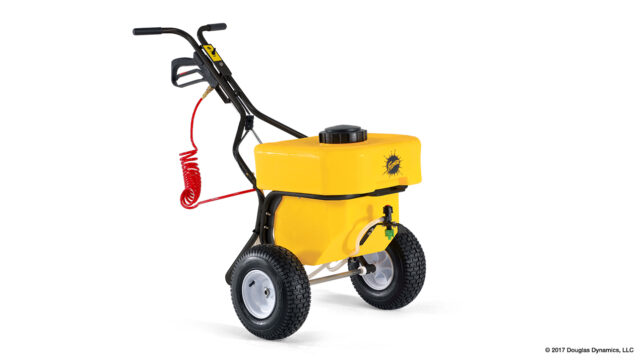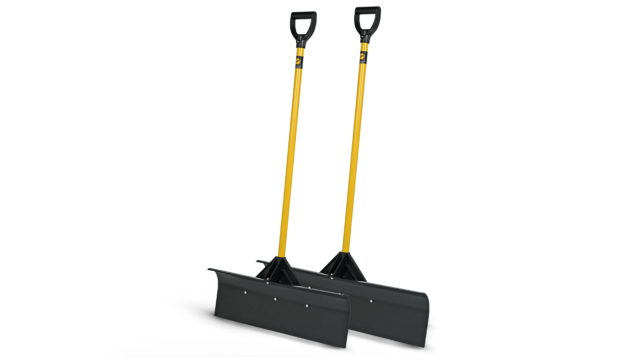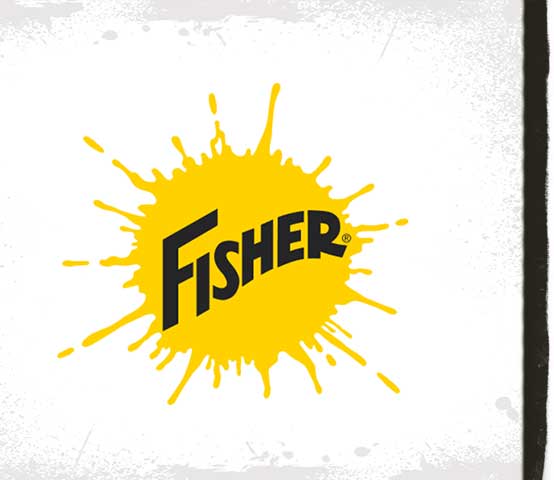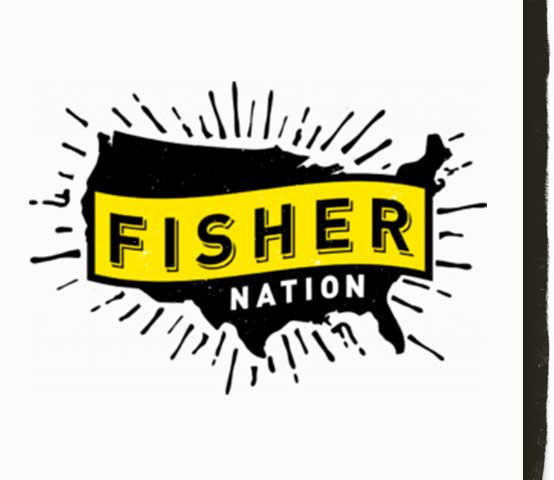Resource Articles Category: Business Advice
FMVSS Fundamentals for Plow Drivers: Proper Ballast Weight, Backup Cams & Lighting
Created April 29, 2021
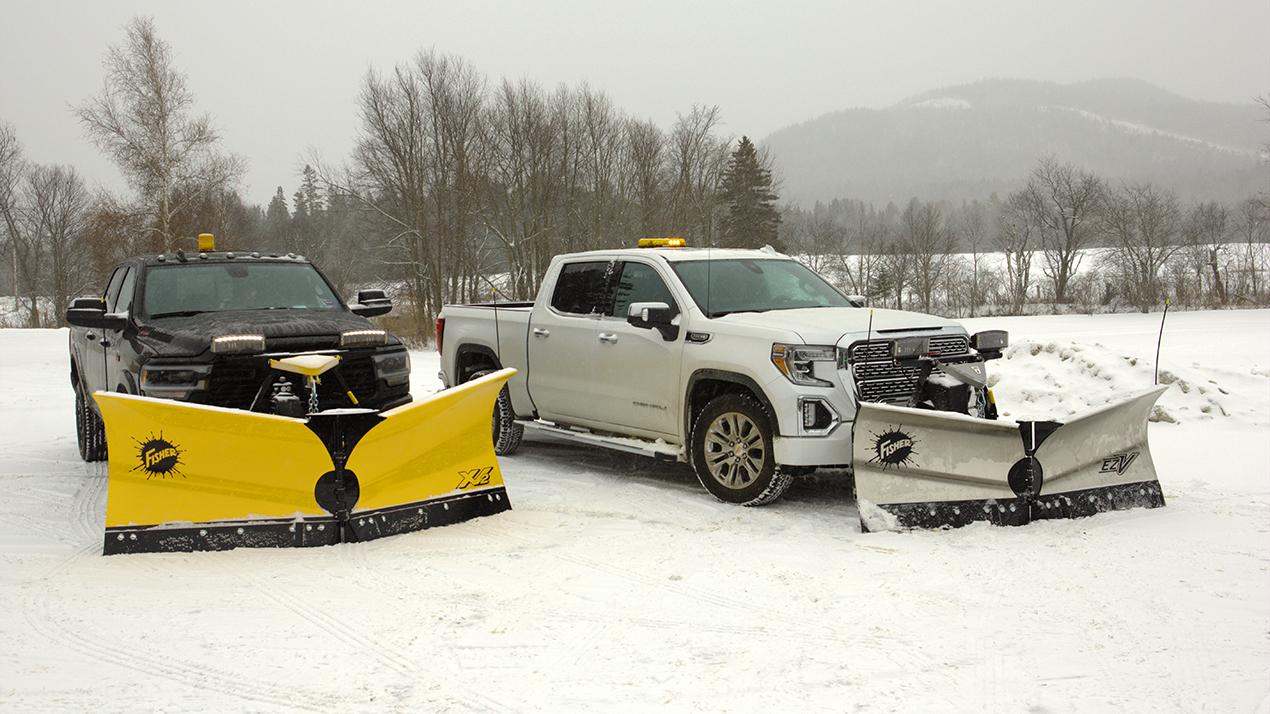
Is your plow truck safe and legal according to Federal Motor Vehicle Safety Standards (FMVSS)? Here are a few tips for snow and ice contractors regarding ballast weight, backup cameras, and lighting for your FISHER® snow plow and spreader equipment.
Federal Vehicle Safety Standard Awareness
The National Highway Traffic Safety Administration (NHTSA) issues FMVSS standards in order to prevent and reduce vehicle crashes. Although each state and municipality may have their own specific laws and ordinances, there are a few standards that winter service contractors should be highly aware of.
1. Axle Loading; Braking (FMVSS 105)
Understanding Gross Vehicle Weight Ratings (GVWR) and Gross Axle Weight Ratings (GAWR) are important to make sure weight limits are not exceeded and safety conditions are met. The vehicle manufacturer sets these requirements so equipment manufacturers know how much additional weight the truck is meant to safely carry and can design products to meet those needs.
Contractors must comply by installing the proper snow plow and/or spreader that is not too heavy and adequately ballasted for proper weight distribution. Find the right FISHER fit for your vehicle using the eMatch system to easily identify viable plow options or the spreader selector tool to determine your spreader match.
- Weight Distribution Considerations:
Some vehicle manufacturers specifically design their trucks to be nose down, tail high for aero dynamics. It is understood that the bed of the truck will be used to haul and carry items, adding weight to the back and leveling it out.When a snow plow is added to the front of the truck, that weighs it down and diminishes the ground clearance. This results in the plow not being able to adequately carry or stack snow as high as it normally would and may cause transportation ground clearance issues.
- Ballast Weight:
To better distribute the weight, its recommended to install a ballast retainer kit, tailgate spreader or in-bed hopper. If you use a spreader for ballast, remember to calculate the weight of spreading material when looking at the vehicles remaining payload capacity. Proper ballast weight can help to improve vehicle stability and control. Giving a heightened sense of stability and traction on icy surfaces with better handling, steering, braking, and cornering.TIP: The ballast calculator in eMatch can easily determine how much ballast weight is required.
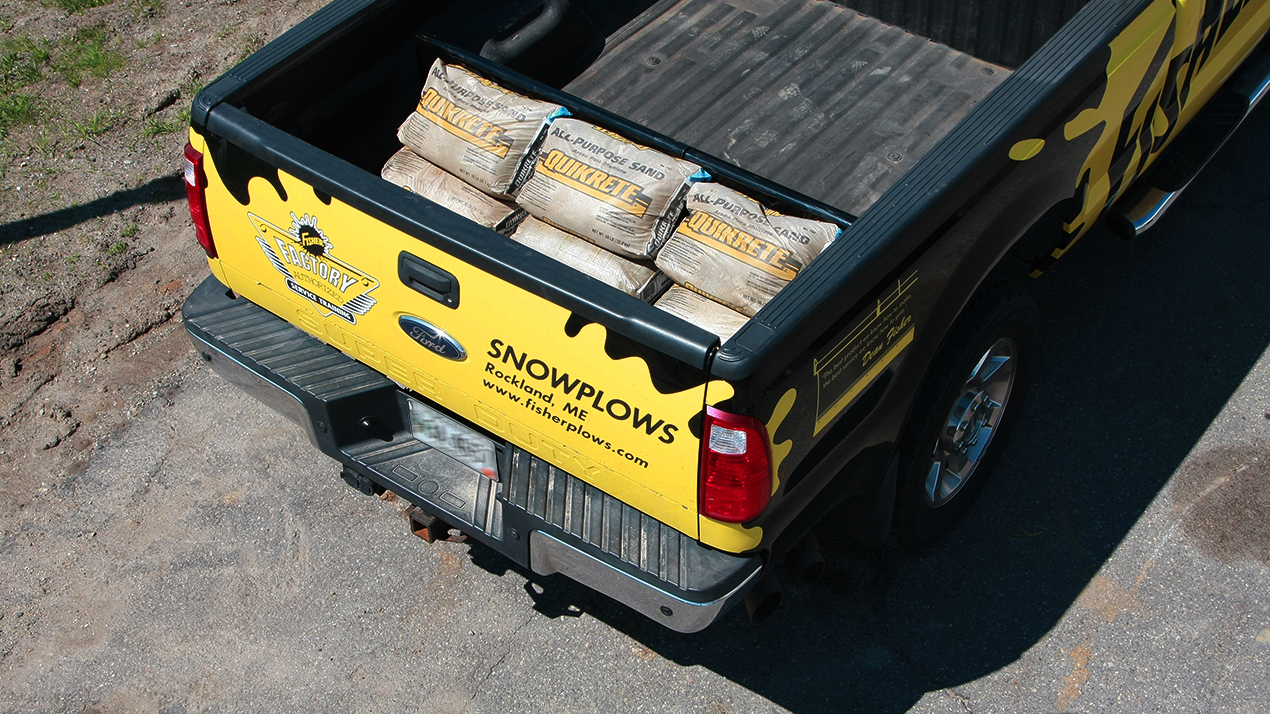
- Leveling Kits & Plow Prep Packages:
Most heavy-duty trucks offer a “Plow Prep” package with a heavier suspension, increased battery size and charging system, and sometimes even a bigger cooling system to help manage the extra weight and electrical load of the plow.For light-duty or half-ton trucks, contractors can look into a suspension aid like a lift or leveling kit. This doesn’t modify or increase the weight ratings of your truck and won’t allow you to select a bigger plow. It simply lifts the front suspension to avoid hitting curbs or scraping the blade during transport, while also making it easier to quickly attach and detach the plow.
2. Rear Visibility (FMVSS 111)
Before 2014, the law just focused on the need for rearview mirrors but has now evolved to include backup cameras as well. Expanding the required field-of-view for all vehicles less than 10,000 pounds GVWR to include the 10-foot by 20-foot zone directly behind the vehicle too.
Active Backups Cameras Are Required by Federal Law
Some truck tailgates need to be removed when installing a spreader, like the STEEL-CASTER™ and POLY-CASTER™. If that’s the case, federal law requires a replacement backup camera to provide the same level of visibility. A hitch mounted spreader may work since the camera view is not completely obstructed. It is the responsibility of the person altering the vehicle to make sure the visibility requirements for FMVSS 111 are satisfied.
3. Lighting & Conspicuity (FMVSS 108)
When installed according to the product installation instructions, FISHER snowplows will meet FMVSS 108. Check your local ordinance to see what the law requirements are for plow drivers and if you are allowed strobe lighting or any additional lighting to be compliant.
Aiming Your Plow Headlights Properly
Plow headlights that are improperly aimed can make it difficult for the occupant and oncoming driver to see. Here is a video on how to adjust them for optimal visibility. Be careful when using aftermarket plow headlights or adding an LED bulb in halogen-headlamp housing—these are not the intended design to provide safe light output and are illegal.
The FISHER INTENSIFIRE™ LED Headlamps with patented EdgeView™ technology are rated at the highest LED light output in the market that the standard allows. Offering a full 180 degrees of light visibility with solid optics that specifically place light exactly where it needs to be.
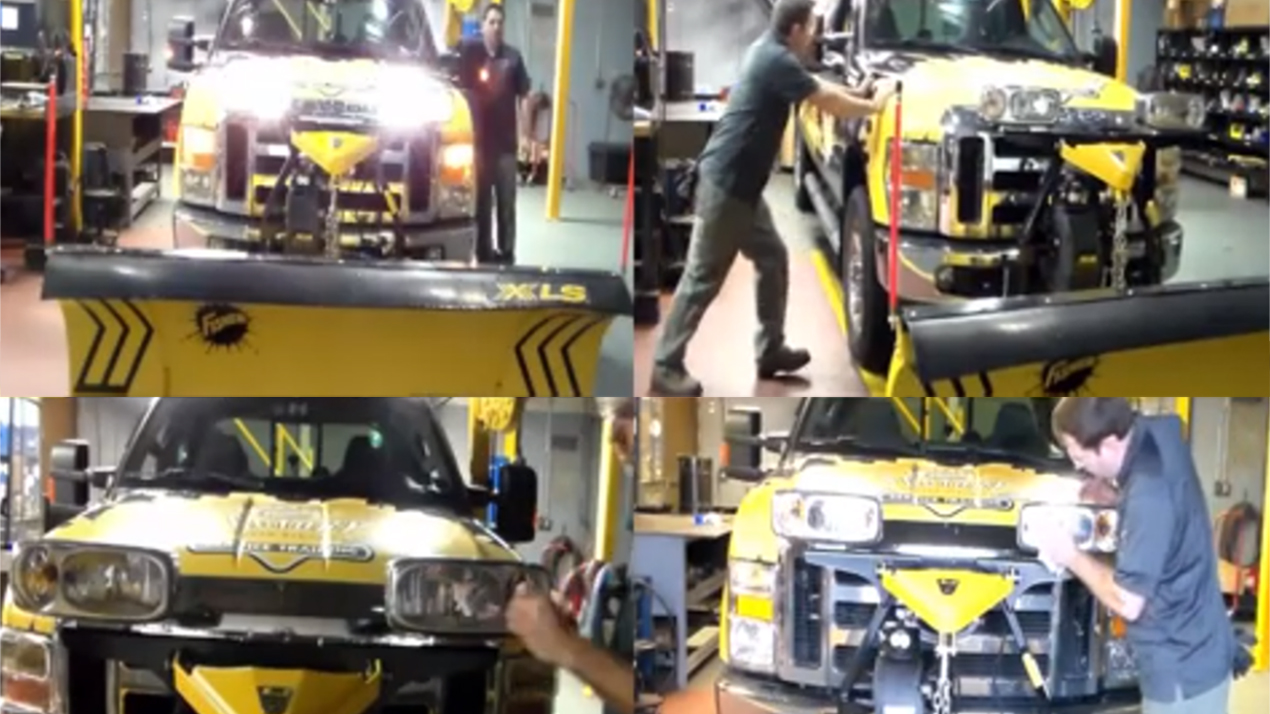
4. Occupant Safety, Crash Protection (FMVSS 208)
When a complete vehicle is initially produced, the manufacturer certifies that the vehicle meets all applicable FMVSS in effect at that time—including FMVSS 208 in the event of a crash. When an installer of snowplow equipment works on a new, untitled vehicle, they are required to certify the vehicle will continue to meet all FMVSS requirements, including occupant crash protection. For a previously titled vehicle, the installer of snowplow equipment is not allowed to render the vehicle out of compliance, even though there is no certification required.
Fortunately, Fisher Engineering does compliance testing and evaluation work for our plow installers by:
- Working with the vehicle manufacturers to jointly test our combined equipment through the NTEA Snow control committee
- Evaluating published crash test data from the NCAP (New Car Assessment Program) run by the federal government
- Have even conducted our own vehicle and plow equipment crash test when necessary
FISHER Plow Truck Crash Testing
Fisher Engineering is one of the few snowplow manufacturers in North America that perform our own crash testing to ensure FMVSS 208 compliance. We utilize certified vehicle testing labs that also perform crash testing for the federal government and vehicle manufacturers.
It is because of this process that an installer of a FISHER truck plow can be confident that they have not rendered the vehicle’s occupant crash protection systems inoperable, they will be able to meet FMVSS 208 requirements and certify if needed (assuming it was installed per installation instructions and plow application guidelines).
Complying with FMVSS standards is important for the safe use of the vehicle and snow plow operators. Having the proper ballast weight, rearview visibility, and safe lighting are key to staying road legal while driving a plow truck.
Continuously Improve Your Snow & Ice Control Crew With Ongoing Training
Created July 30, 2020
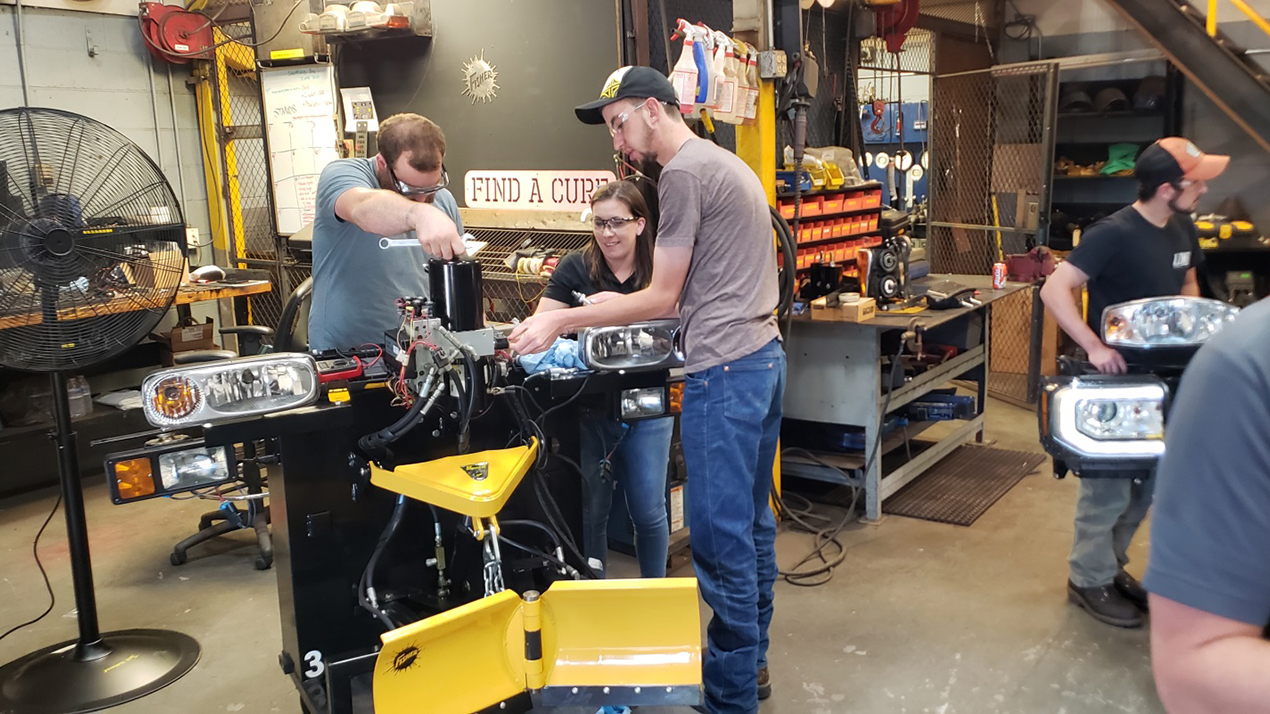
Ongoing education is important for all industries, but knowing which classes or certifications are right for your specific role may be hard to determine. Learn more about the key snow and ice control growth opportunities that can help advance your career, enhance your business and mitigate risk.
Create Confidence with Snow & Ice Control Certifications
Field experience only gives you so much credit. By obtaining certifications, you can gain a competitive advantage that is measurable. At some point, a certification may be the only thing standing between you and the competition. Here are the most prominent certifications that snow and ice contractors should look into obtaining.
- ASCA Certification: This is an annual certification for individuals, focused around industry best practices to support Approved American National Standards (ANSI) in the snow and ice management industry. ASCA is the only industry education course recognized by insurance agencies that help businesses improve company standards, reduce company risk and properly document work. This certification positions companies as reliable, professional and trustworthy while protecting them and their clients.
- ISO 9001/SN 9001: The International Organization for Standardization (ISO) 9001 is the most common standard for quality management. Tailored to commercial snow and ice management, the SN 9001 guidelines limit exposure to slip-and-fall disputes and focus on end customer satisfaction. This is a company certification that stays with the employee as long as they are still employed there. It’s important to keep record of any employee training since it is prone to independent and third party audits on an annual basis to hold companies responsible.
- Certified Snow Professional (CSP): This program educates business owners and top executives in all aspects of snow and ice management. Candidates need to meet certain criteria, complete an application and once approved by SIMA, a 200-question exam is required that tests the contractors knowledge in 6 key areas: Business, Human Resource Management, Marketing, Sub-Contractors, Snow & Ice Science, Snow & Ice Operations and Technique’s. A CSP accreditation is for individuals and can be a useful sales tool that should be renewed annually.
- Advanced Snow Management (ASM): The purpose of this ANSI-accredited program is to engage personnel and operations management in receiving core knowledge about safe and responsible snow and ice control services. Individuals can sign up for four courses through SIMA that are designed around core principles, plowing operations, sidewalk operations and ice management.
Attend FISHER’s Annual Service School
Gain hands on experience with interactive modules and quizzes available through Fisher Engineering. Learn how to troubleshoot snow and ice control equipment in a series of technical training modules that cover basic electrical and hydraulic fundamentals as well as tips and tricks of how to maintain and run your equipment properly. These intermediate level training courses are specifically designed for FISHER® snow and ice control technicians and are typically offered in late summer.
Additional Online Training Opportunities
How to Protect Your Business Against Slip & Fall Claims This Winter
Created June 18, 2020
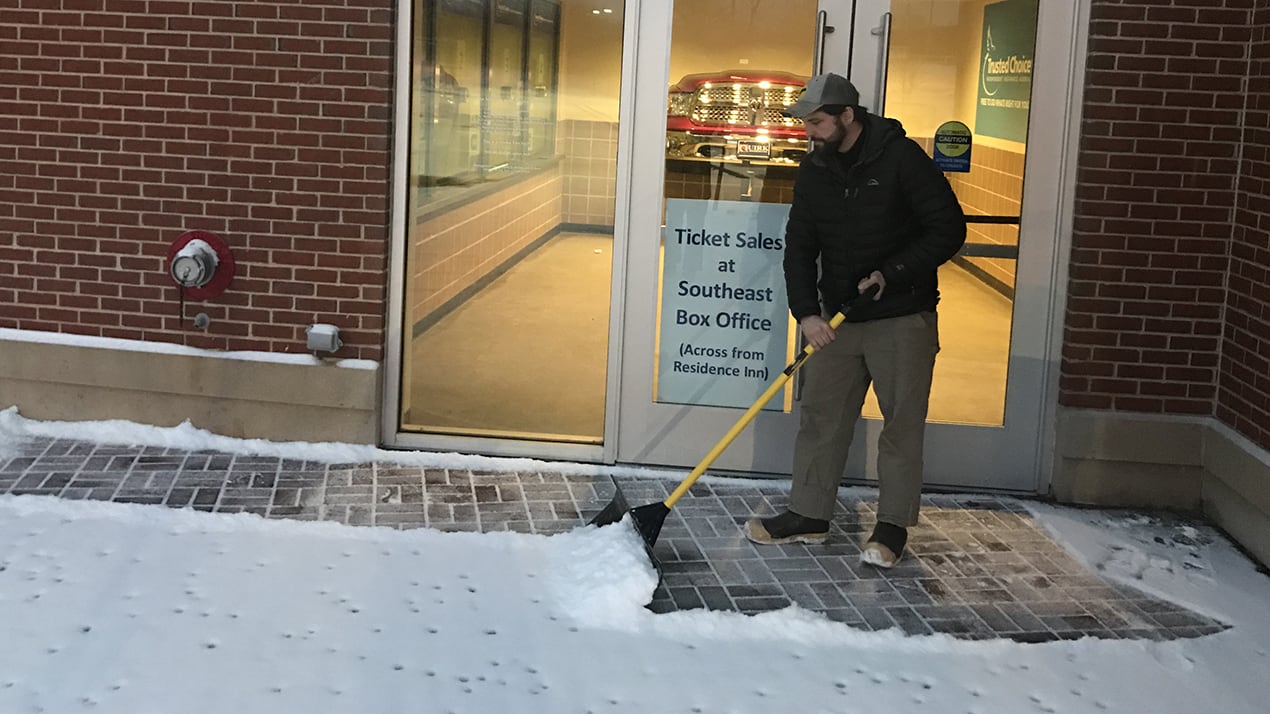
It’s hard to ignore losing thousands of dollars in a slip and fall claim because a job site isn’t cleared properly. Slippery conditions can result in serious injuries, racking up large medical bills, legal expenses and sometimes even incur court costs. It’s important to be thorough and take extra measures to ensure everyone’s safety and protect your business from slip and fall claims.
Pay Special Attention to Accident Prone Areas
Slip and fall incidents commonly take place on stairs and entryways. Pay special attention to wheelchair ramps, crosswalks/sidewalks, in between parking spaces and any other heavy foot traffic areas. Being mindful of where and how you remove snow can help to prevent it from being re-plowed onto ramps and walk ways, reducing the chance of melt and refreeze. Contractors should also be cautious of employee shortcuts or dumpster and mailbox huts that may have daily traffic.
Pro Tip: Utilizing curb guards on your plow will allow you to clear snow as tight to the curb as possible and helps reduce wear and damage to the plow.
Opportunities to Mitigate Slip & Fall Incidents
Commercial property owners have begun shifting the responsibility of slip and fall incidents to winter contractors so be mindful with the language in your contracts, know what you are liable for and be well-versed in your insurance policy. Being proactive is the best defense against reducing accidents—here are a few opportunities to be conscious of.
- Pre-Season Walk Through: Knowing where hidden obstacles are located can greatly reduce injuries and damage to your equipment. Even awnings, roof lines and drainage areas should be clearly marked because snow and ice can melt onto the sidewalk below and refreeze.
- Proper Outdoor Lighting: It’s easier to notice ice in a well-lit area due to the reflection on the surface or subtle change in color. If pedestrians are under the impression that the area has been treated, they may walk more confidently with their head up so having proper lighting is important for them to be able to detect potential hazards. Lighting should be consistent whether it’s down lighting, pathway guides or LED floodlights for a parking lot. If you notice any shadows or glares that may hinder a pedestrian’s perception, inform the property owners to mitigate the risk.
- Standard of Work Documentation: It’s important to establish a protocol that your crew is fully trained on and expected to meet. Knowing who is in charge of various areas (especially transition zones and curb lines) will reduce confusion and ensure the entire property has been properly treated.
- Work & Strobe Lights: When your equipment is well-lit, it draws attention to the work area and alerts pedestrians of potential danger. Block sidewalks at both ends during operation to prevent people from walking through, allowing you to complete the work in a timely manner.
- Monitor Salt Use: Curbs, door entrances, stairs and ramps are areas that can easily be over salted, inadvertently creating a slip hazard. Find a happy medium between the two.
- Pre-Treat Accident Prone Areas: A liquid brine pre-treatment can help to prevent ice from bonding to the pavement and reduces the need and desire for additional material. It also minimizes post-storm cleanup and the potential for melted ice to refreeze.
Put it in Writing
Documenting when and where you started on the property and taking photographs of the condition after service will come in handy when you’re trying to prove that something was done. If your client asks you to use less salt to save their company money, double check that you aren’t liable for any slip and fall claims. It always comes back to the contract. It’s important to note that property managers should be inspecting their properties and are responsible for areas that may refreeze. It’s a burden for contractors to keep checking back on the property or waiting around to take care of any areas that may develop black ice.
NOTE: Any information in this article does not replace your lawyer or insurance agent’s advice. Always consult their expertise for any questions pertaining to your policy and contract. You don’t want to be held responsible for something you didn’t understand.
Bringing Predictability to the Unpredictable Business of Snow & Ice Control
Created October 17, 2017

Plow contractors need more than just reliable operators. They need the right mix of clients to help minimize the uncertainty of seasonal snowfall. So when drawing up your contracts, consider this well-diversified mix to ensure long-term success:
Seasonal Contracts
Just like it sounds, this contract is priced by the season. While it might be a hard sell initially, many long-term customers come to realize the convenience of a fixed contract because it allows them to more accurately organize their annual budget.
If you do go this route, start by targeting a minimum of three years to bring seasonal snowfall variables into perspective. Some additional things to include:
- Capping contract snowfall to a certain amount, then charging every additional inch by the hour.
- Salting/Sanding: If included in the contract, what are the details of your service?
- Stacking/Removal: How will this be handled?
Per Event Pricing Contracts
This contract prices by the number of inches of snowfall in a single storm. Once a predetermined level of snowfall is reached, service persists until weather conditions subside and the property is clear. The longer it snows, the more trips you’ll make.
Per Hour Contracts
While this avenue is a nice way to diversify your portfolio, your relationship with the customer will be key. Trust is essential—and it goes both ways.
Per Push Contracts
A popular option for customers with less than 50,000 square feet, “per push” usually takes less than an hour and is invoiced every time you clear their lot. Similar to “per event” pricing, the pros and cons are based on the amount of snowfall. The more events, the more payments/income you earn.
While these common pricing models are a great way to minimize risk, there are other ways to secure your bottom line. Companies like Chicago Weather Brokerage (cwbrokerage.com) can help take weather out of the equation by offering custom-tailored, comprehensive risk management solutions.
Whatever your strategy, diversification is always the way to go for both your business and your customers. It’ll help you weather the storm—and your future.
Go big with snow removal and get the equipment that’s going to get the job done all season long. The award-winning STORM BOXX™ pusher plows with TRACE edge technology move massive amounts of snow, so you can get more jobs done faster and better.
6 Tips to Minimize Commercial Property Damage This Winter
Created

It’s better to be proactive than reactive when it comes to winter property damage. Start with a plan prior to any snowfall event and pay strong attention to detail during each storm. Follow these 6 tips to reduce commercial property damage this winter.
1. Walk and Mark the Property in Fall
Before any snow hits the ground, prep for the season ahead by walking the property and noting any existing damage. Place stakes at entry ways, curbs, public sidewalks, manholes, and any other obstacles you want to avoid. Not only will this minimize property damage but also protect your equipment.
2. Hire Experienced Plowers
Insufficient training and a lack of experience can be a destructive mix. The more up to speed your team is, the more efficient they will be and the less you’ll have to worry. Even though seasonal workers come at an inexpensive rate, it could be costly to your business due to their inexperience with the equipment and client property.
3. Use the Same Crew (But Always Have a Plan B)
Changing a crew in the middle of the season isn’t an ideal setup and can cause confusion since they aren’t as familiar with the property. But life doesn’t always go according to plan—if you get stuck in a situation where you need to switch plowers, make sure to have site maps readily available for each location. These documented overviews will point out areas to watch out for and should include notable tips from the preseason walk through.
4. Ensure Your Plow Blade Is Leveled Properly
If your blade is too low to the ground or uneven, you could risk damaging the pavement. After repeated scrapes, the asphalt sealant can deteriorate and leave the surface unprotected. It’s a best practice to not exceed 10 mph while plowing to get a more even scrape. Plus, you’ll be more efficient by taking fewer passes in order to clear the pavement.
5. Don’t Drive Distracted
When you’re distracted, mistakes happen. Avoid using your cell phone, playing with the radio, or dosing off from a lack of sleep. Even the best drivers start to get tired after working 14 to 16 hours straight. Have a plan to rotate shifts to avoid a potential safety hazard and reduce stress.
6. Use Just The Right Amount of Salt
To avoid slip and fall incidents, most commercial properties want salt spread but there is such a thing as too much salt. It can create sidewalk spalling, concrete scaling and damage to entryway floors. After plant roots absorb the salt, it can “burn” the surrounding landscape creating damage and dead foliage. It’s also a risk to pedestrians when it creates an uneven surface.
Now that you know the 6 tips, your team can proactively minimize damage to commercial properties this winter.
Go big with snow removal and get the equipment that’s going to get the job done all season long. The award-winning STORM BOXX™ pusher plows with TRACE edge technology move massive amounts of snow, so you can get more jobs done faster and better.
How to Place a Facebook Ad
Created July 28, 2016
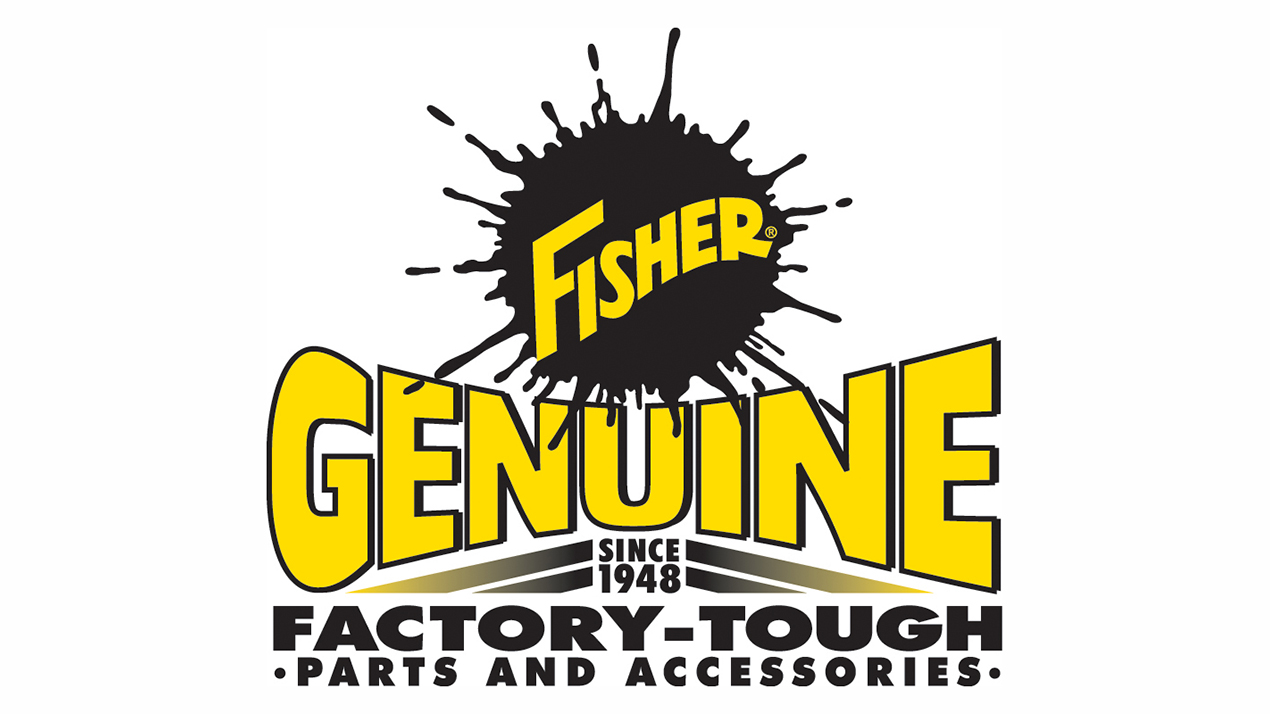
One of the most powerful and cost-effective ways for a business to advertise online is through social media. Social media advertising helps businesses find potential clients by advertising based on various criteria such as users’ interests, location and demographic. Social media advertising proactively targets relevant users by displaying ads in their news feeds regardless of whether or not they are actively searching for your products and services. Facebook advertising offers advanced targeting and reliable tracking tools to measure the success of your campaigns, such as impressions (number of people who saw your ad), clicks to your website, “likes,” shares, comments, etc.
Ads can be found on most social media platforms, but the platform that leads the digital empire is Facebook. With 1.65 billion active daily users, including 989 million active daily users on mobile, Facebook leads the charge in social media users. If you are a business owner or a marketer who is still doubtful about the impact of Facebook for your business, here are some reasons why Facebook advertising is so effective.
1. Facebook’s Popularity = Opportunity
Facebook is the second most popular website in the world next to Google. Can you just imagine having the potential to reach even just a fraction of its 1.65 billion users? With Facebook, you can maximize your reach, by putting your ads in front of your highly targeted prospects, for a fraction of the cost of other forms of advertising media.
2. Advanced Targeting Options
Facebook builds a profile of users’ interests based on information they have provided on their own personal page, posts that they “like”, the Facebook pages they follow and what they are responding to on Facebook through their replies, comments, and shares. All that data allows advertisers the ability to target well beyond general demographics (male, female, age) and geographic data (where they live). With Facebook, you can target at a much deeper level by focusing on interests, behaviors and connection-based targeting. For example, you might want to target people based on their interest in snow plowing, landscape maintenance, pickup trucks, four-wheeling, etc. By building these deeper layers of targeting, you can connect with your ideal audience.
3. Track Your Success
Unlike a lot of traditional advertising placements (TV, radio, print), Facebook advertising gives us the ability to understand how people are reacting to your ads. Facebook allows you to easily track who is clicking on your ads, how many people are liking your page, how many people are clicking to your website, or watching your videos.
4. Multiple Objective Options
Depending on your advertising goals, Facebook offers a long list of objectives to set up your campaigns. Following is a list of some Facebook options that you might find helpful to get started:
-
- Local Awareness: serve ads to people located physically near your business
- Page Likes: grow your page following and drive new fans to your page
- Page Post Engagement: make sure more people are seeing your content when you post it to your page
- Video Views: get more people to watch the video content you post
- Website Clicks: drive more fans to your company’s website
5. Find and Connect with a Local Audience
Local business ads are great for serving ads to people in your area. With the “local awareness” objective, you can target people who live within a certain radius of your business – for example, I only want people within 30 miles of my business to see this ad. This ad format allows your local prospects to learn the unique value your business offers, including your proximity to them, a map to your business, and even allows them to make a direct phone call right from your ad, on mobile devices.
6. Reach Your Mobile Audience
In 2014, mobile usage surpassed desktop usage. In the first quarter of 2016, Facebook reported 90% of total Facebook users access it on mobile. Every year more and more snow and ice control users are accessing product information on mobile devices. Facebook ads give you the ability to put your message right in the palm of their hands.
7. Advertising On Facebook Is Cost Effective
With the tools available from Facebook, you can narrow down who you are targeting. You can find people who care about your business and the value your business can offer them, and you only pay when you get results! Depending on your desired actions, such as page likes, video views, engagement, and visits to your website, you can see results for under $1.00 per action. Better yet, you can set daily spend budgets or even maximum spend budgets so you never spend more than you planned.
8. Creative Flexibility
Facebook makes it very easy to update ad copy or images quickly. This allows you to test different image and text options to see what ads are performing the best.
If you were considering digital advertising, Facebook marketing would be a great place to start. With a very large and active audience you have the ability to target exactly who you want to see your ads, define your goals, track the result, and have creative freedom – all for minimal costs compared to other platforms. Once you get started, you’ll discover it’s easier than you think!
